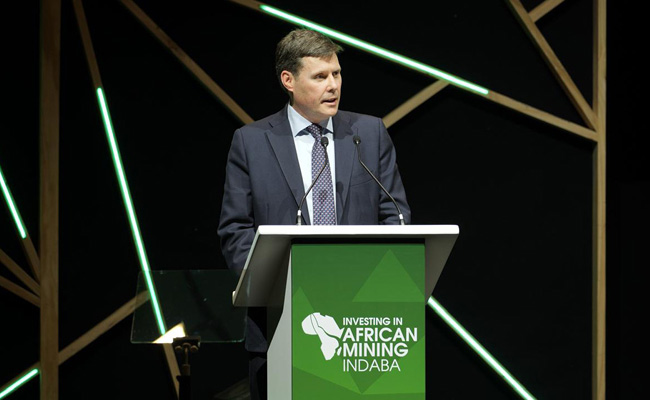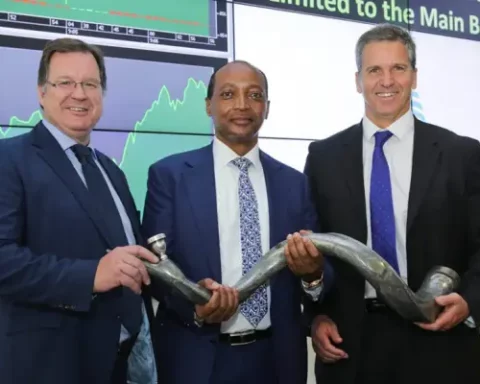Duncan Wanblad’s ambitious plan to axe diamond producer De Beers from Anglo American’s portfolio might be behind schedule, but the waning favour of would-be suitors makes “zero” difference to the timetable, says the Anglo American CEO.
Speaking on the sidelines of the Mining Indaba in Cape Town last week, Wanblad said reports that its larger rival BHP has cooled on the prospect of buying Anglo American would make no difference to his strategy.
Last April, BHP launched an audacious £39bn takeover offer for Anglo, which ultimately failed in May. With speculation running high that BHP would return, BHP insiders told the Financial Times three weeks ago that Anglo American’s share price has “become too expensive to justify a fresh bid in the near term”.
Wanblad said BHP’s sentiment on a new tilt makes no difference to him.
“This process was not driven by BHP. It was accelerated by the fact that BHP came at the time, and made us have to go public with it a couple of months earlier than I otherwise ideally might have done, but we were going to do this because this represents the real value unlock of this organisation,” he said.
“The imperative to do this is not about whether you’ve got more or less time in a potential takeover world; it’s about unlocking the value and delivering that value for shareholders sooner rather than later.”
By “sooner rather than later”, Wanblad’s initial plan was to finish Anglo’s restructuring by the end of the year. But ructions in the diamond market have complicated this schedule.
The easier parts of Anglo’s overhaul involved selling its nickel assets, its steelmaking coal mines, and unbundling Anglo American Platinum; the trickier part is hiving off its 85% of De Beers, either through a sale or listing it in London or New York.
Last week, the government of Botswana, which owns the other 15% of De Beers, said it wants to raise its stake in the diamond firm – but wouldn’t say to what level.
De Beers may still be the largest diamond producer in the world, but it isn’t an easy sell right now. A surge in lab-grown diamonds, as well as falling demand in China put a ceiling on the value of diamonds. As a result, Anglo American wrote down the value of De Beers last year by 17% to $7.6bn, and said this week it is conducting another “impairment review” of the diamond company to possibly write it down further.
“I’d still very much like to be done by the end of this year, but realistically, it’s not impossible that we’ll still have De Beers early next year,” said Wanblad.
This is because Anglo American is waiting for the diamond market to recover – which, notably, Wanblad expects “towards the middle or towards the end of the year”.
He reiterated that investors are adamant that Anglo should not “destroy value” by rushing towards an exit on the diamond business. In this sense, BHP’s reassurance that it wouldn’t look to buy Anglo American at this price ought to give Wanblad more breathing room to wait for signs of life in the diamond market.
Smacking of desperation
The BHP insiders aren’t wrong about the valuation shift.
In response to Wanblad’s plan, as well as the prospect of another takeover bid, Anglo American’s share price has rallied 34.9% in the past year, while BHP’s stock has fallen 17.6%. This would make the margin for error slim, lest any buyer overpay – as AB InBev did for SABMiller in 2016.
Still, analysts aren’t convinced a deal between the two is entirely off the table.
Analysts at JPMorgan, for instance, have said the strategic and economic logic for a deal between BHP and Anglo remains “robust”, even if Anglo’s share price has risen too high in recent months.
Analysts reckon this year will be one characterised by a number of mining deals. Aside from Anglo, attention has shifted to one of the more surprising marriages: a tie-up between JSE-listed coal producer Glencore and diversified miner Rio Tinto.
Reports from several sources emerged last month suggesting that the two companies were discussing a merger to create the largest mining company in the world, with an estimated value of $150bn. In the end, talks were apparently called off, with both companies treading warily.
It would have been an odd cultural fit anyway: Glencore has a large thermal coal business, which is something Rio Tinto ditched years ago as it refocused on renewable assets. This is why some analysts greeted the deal with scepticism, warning that, with few obvious benefits for either side, it smacked of desperation.
Nor does Wanblad appear to think much of these sorts of deals. At the indaba, he told Miningmx that industry consolidation is a “calamity” that will “undoubtedly result in less actual mining being done in the world”.
This, he said, will prejudice people and the countries that “desperately need these projects to derive benefits from them for decades and decades”.
This coverage of the Mining Indaba was brought to you in association with Northam Platinum.
Sign up to Currency’s weekly newsletters to receive your own bulletin of weekday news and weekend treats. Register here.










